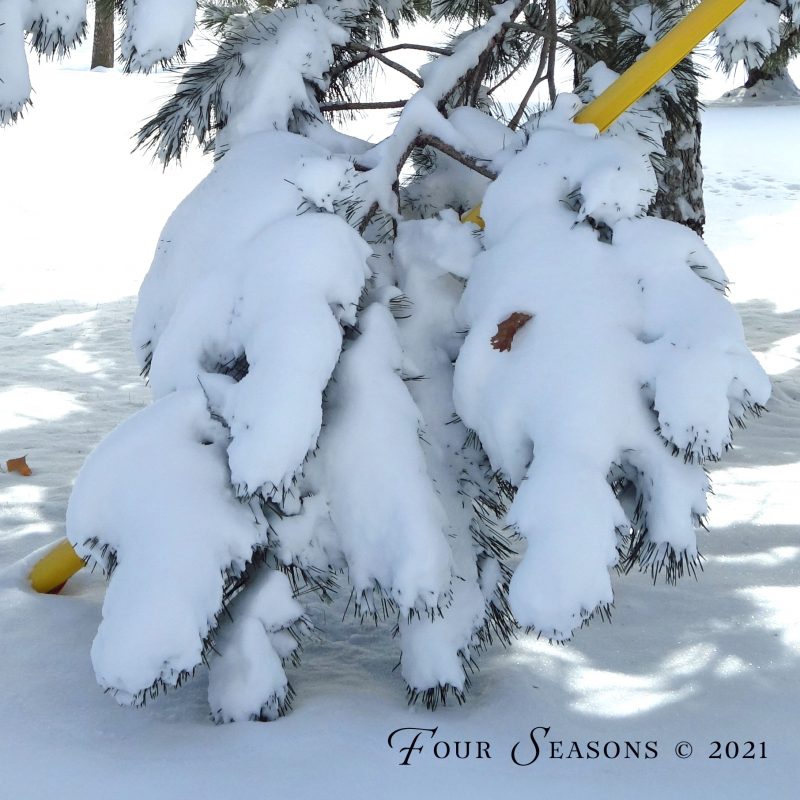The arrival of the heavy, wet snow recently has been a very welcome sight not only for the water reserves for next summer, but also for the ski areas and recreationists as well. Even though the snow is very much needed, it can sometimes wreak havoc with your landscaping and the plants in your yard, especially when it is moisture laden, so it’s important to do a little snowy winter landscape care when this happens.
The first thing you want to do is to go out in your yard and get that heavy snow off of the branches of your trees and shrubs because if you don’t, the weight of that snow could break those branches. This is especially important for your evergreens that have needles that will hold that snow. Remove snow by gently shaking them and the key word here is “gently.” Since it is so cold, those branches are frozen and brittle and a hard shaking could break them more quickly. If you have small children, make a game of it as a family activity. If you can’t reach them with your arms, use a broom to loosen the snow. We’ve even used a golf ball retriever for very tall trees in our yard with good success.
Most of the time, snow will simply melt and fall off when the sun comes out and the temperatures warm up, but when you have freezing temperatures all day, as we’ve had this week, leaving the snow on those branches can permanently bend them. Removing the snow will also allow sunlight to get to the ice that may have accumulated on the branches underneath that snow so it can melt off more quickly.
It’s also important to clear your roof, especially when there are plants underneath. Steep roofs are the most vulnerable, but snow can easily slide off of any roof once the temperatures begin to warm up a bit. When it slides onto shrubs or trees that snow will also break their branches. Clear the roof little by little, if possible, so that you can remove the snow that has come down in small batches before loosening more.
If you find that a branch has broken, grab your pruners and prune it off now. Pruning while dormant is the best thing to do as there is little stress on the plant since it’s not actively growing. If you wait to prune until spring when the tree or shrub is starting to grow, those fresh cuts will be more susceptible to insects, fungus, and bacteria that could cause diseases.
My final word about snowy winter landscape care is salt. Although it’s an effective ice melter, it’s not good for plants because when it melts, the runoff will kill grasses, trees, shrubs and perennials. If a commercial preparation is the easiest thing for you to use or is the only thing that is available, be sure to choose a product that will not cause damage to your garden. Better yet, shovel down as much as possible, then apply sand or bird seed as anti-skid/traction material. You can even use kitty litter if that’s all you have on hand. Not only will these provide a safer walking surface, but the birds will thank you too for the extra food during a time when snow is covering most of their food sources!
I’m thankful for the great snowpack and the wonderful moisture the recent storms have brought. Even though I’ve gotten quite a workout shoveling lately, I’m blessing every snowflake because it means water for a great gardening year!

